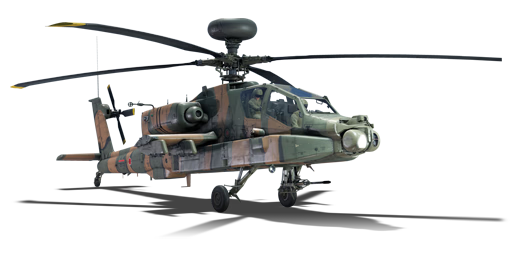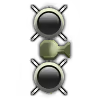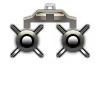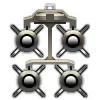



The AH-64DJP is a license-built version of the AH-64D by Fuji Heavy Industries to improve the Japanese anti-tank helicopter capabilities, and a cost-efficient alternative over a domestic attack helicopter development program. With a promised future for 62 Japanese Apaches, the slow and long-term purchase of 2 helicopters a year raised the price and the order was later cut down to a total of 12 AH-64DJPs. The remaining Japanese Apaches later received upgrade kits to serve them longer in service but with the MoD deciding in 2022 that the future isn't for helicopters, the AH-64D's together with the AH-1S and OH-1 will soon be replaced by unmanned drones instead.
It was introduced in Update "Starfighters". It is similar to the American version, but it does not have AMASE or APKWS missiles. The main advantage of the Apache is its AGM-114K Hellfire II, which can destroy tanks from a long distance. The best way to use the missiles is to scan the ground with radar and thermal vision and launch missiles every five seconds or more once targets are acquired. This way, it can hit multiple targets or make sure they are destroyed and compensate for the long flight time. The AH-64DJP is equipped with four ATAS missiles for self-defense, which can shoot down enemy aircraft. It also has a 30 mm cannon with a computerized system that can automatically track and lead targets in the air or on the ground, and fire at them with precision.
| Belt | Belt filling | Armor penetration (mm) at a distance: | |||||
|---|---|---|---|---|---|---|---|
| 10 m | 100 m | 500 m | 1000 m | 1500 m | 2000 m | ||
| HEDP | 51 | 51 | 51 | 51 | 51 | 51 | |
| Name | Weight | Slot | ||||||
|---|---|---|---|---|---|---|---|---|
| 4 × | 40.4 kg |  |  | |||||
| 19 × | 231.6 kg |  |  |  |  | |||
| 2 × | 128.3 kg |  |  |  |  | |||
| 4 × | 198.5 kg |  |  |  |  | |||












Flight performance |
|---|
Survivability |
|---|
Weaponry | ||
|---|---|---|